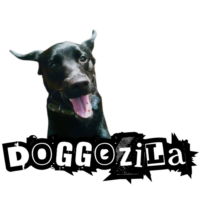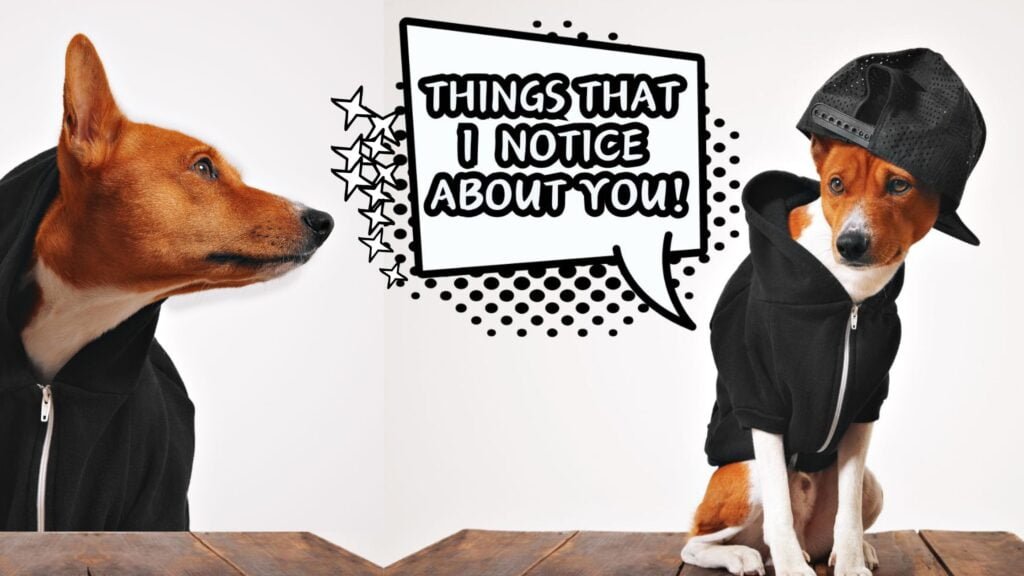The counter-surfing is a common behavior exhibited by dogs that involves them jumping onto kitchen counters or other high surfaces in search of food or interesting items. This behavior can be surprising and concerning for many pet owners, as it usually involves the risk of knocking over objects and consuming harmful items.
Dogs engage in counter-surfing for several reasons, primarily driven by their instincts and motivations such as curiosity, hunger, or sheer opportunism. The counter-surfing habit of dogs isn’t just frustrating – it’s dangerous. From hot pans to toxic foods, your kitchen hides countless hazards for curious noses.
This guide reveals why dogs raid counters and exactly how to stop it using science-backed methods that actually work.

WHY DOGS TURN INTO COUNTER-SURFING BANDITS
Dogs don’t view counter-surfing as misbehavior – to them, it’s a successful hunting strategy. Their powerful noses detect food traces we can’t perceive, making your kitchen an irresistible treasure hunt. Understanding this instinct is key to changing the behavior effectively.
The Evolutionary Roots of The Counter-Surfing Dogs
Dogs descended from wolves who survived by scavenging meals wherever possible. Modern dogs retain this “finders keepers” mentality, viewing any unattended food as fair game. High surfaces like counters mimic elevated feeding spots in nature where food might be safer from competitors.
This explains why even well-fed dogs can’t resist counter-surfing—it’s hardwired into their DNA. Wild canines survived by scavenging meals wherever possible, and domestic dogs inherited this opportunistic feeding instinct. Your counters mimic elevated feeding spots where food would be safer from competitors in nature.
This explains why even well-fed dogs counter-surf – it’s hardwired survival behavior. Puppies as young as eight weeks will instinctively jump for elevated food sources. The behavior self-rewards because successful finds release dopamine in their brains. Breaking this cycle requires providing better rewards for leaving food alone.
The Nose of the Counter-Surfing Dogs Knows Too Much
A dog’s nose contains up to 300 million scent receptors, (compared to our 6 million ) between 10,000-100,000 times more sensitive than humans’. When you cook, food odors permeate the air and settle on counter surfaces. To your dog, this is like leaving a neon “EAT HERE” sign flashing. Even freshly cleaned counters retain microscopic food residues they can detect.
While you might smell a clean counter, your dog detects every meal cooked there in recent history. Their vomeronasal organ specifically detects food pheromones we can’t perceive. This explains why dogs counter-surf even when no visible food is present. Simply wiping surfaces isn’t enough – enzymatic cleaners are needed to truly remove food smells. Training must account for this sensory difference to be effective.
Breed-Specific Counter-Surfing Tendencies of the Dogs
Some breeds are notorious counter-cruisers:
- Labradors & Beagles: Food-motivated hunting breeds
- Huskies & Malamutes: Clever problem-solvers
- Terriers: Persistent and agile
- Dachshunds: Surprisingly good at scaling heights
Food-motivated breeds like Labradors and Beagles are notorious counter-cruisers, but even unlikely breeds develop the habit. Dachshunds surprisingly rank high due to their persistence and climbing ability. Herding breeds may counter-surf more when under stimulated. Knowing your dog’s breed tendencies helps predict challenges and tailor solutions. For example, sporting breeds need higher-value rewards during training than guardian breeds might.
🔑 Key Points: Recognizing the signs of counter-surfing is crucial for dog owners. Behaviors such as jumping up, sniffing around, or attempting to reach high surfaces should be promptly addressed to prevent the escalation of this habit.

THE GOLDEN RULE OF COUNTER-SURFING DOGS FIXES
Prevention beats correction every time when dealing with self-rewarding behaviors. The more successful counter-surfing attempts your dogs have, the harder the habit becomes to break. These foundational principles create lasting change.
Create a “No Win” Zone
Complete prevention during initial training is non-negotiable. Use baby gates, ex-pens, or closed doors to block all kitchen access when unsupervised. Keep counters completely clear of all food and food-related items. This includes appliances like toasters that might have crumbs. The goal is zero reinforcement opportunities during the learning phase. As training progresses, you’ll gradually reintroduce controlled access.
The Magic of “Leave It”
This essential command teaches impulse control starting with low-value items on the floor. Always reward with something better than what they’re leaving – if they ignore bread, give chicken. Practice in multiple locations to generalize the behavior. Advanced training involves placing items on progressively higher surfaces. The final test is walking past real food on counters without breaking stride.
Make Counter Boring to Prevent the Surfing Dogs
Remove all visual and scent temptations by storing appliances and wiping surfaces with vinegar. Place cookie sheets half-off edges so they clatter if bumped. Use motion-activated deterrents like „Ssscat“ for persistent cases. The goal is to make counters uninteresting while reinforcing better choices. Over time, this reshapes their automatic responses to kitchen temptations.
🔑 Key Points: Consider adjusting the placement of items—keeping counters free of clutter and food minimizes opportunities for counter-surfing.

STEP-BY-STEP TRAINING PLAN: THE MOST EFFECTIVE TECHNIQUE TO STOP COUNTER-SURFING DOGS
Transforming your food thief requires a structured approach with clear milestones. Rushing the process leads to setbacks, while consistency creates reliable results. After testing numerous methods with hundreds of dogs, trainers agree: The “Leave It” + Environmental Management combo works best. This two-pronged approach addresses both the behavior and the opportunity.
Week 1-2 of Foundation Skills: Teaching “Leave It” With Progressive Difficulty
Begin with “Leave It” training using low-value treats in your hand, progressing to floor exercises. Keep sessions under 5 minutes to maintain focus. Practice when your dog is slightly hungry for better engagement. Use a marker word like “Yes!” the instant they disengage from the treat. Gradually increase difficulty by dropping treats from waist height during this phase. See the example steps you need to take below.
Start with low-value items on the floor, gradually working up to counters:
- Place a treat in your closed hand, say “Leave it“
- Wait until they stop sniffing/nosing your hand
- Mark with “Yes!” and reward from your other hand
- Progress to dropped items, then elevated surfaces
Pro Tip: Use higher-value rewards than what’s on the counter—if they’re stealing chicken, train with steak.
The 3-Second Rule: Building Impulse Control
Dogs typically decide to grab food within 3 seconds of spotting it. Practice having them hold a sit-stay while you place food just within reach. Gradually increase exposure time before rewarding. This builds the critical pause before action.
Week 3-4: Up the Ante with Counter Conditioning
Introduce low-value items on stable surfaces like footstools. Use a leash to prevent sneaky grabs during these exercises. Practice “Walk By” drills where you guide your dog past temptations without stopping. Begin incorporating real kitchen items like empty food packaging to generalize the behavior. Record progress to identify what scenarios need more work. See the example steps you need to take below.
Teach your dog that not stealing food = amazing rewards.
Each time they voluntarily ignore food on counters:
- Mark with a clicker or “Yes!“
- Give a premium treat
- Add verbal praise
This rewires their brain to associate restraint with better outcomes than stealing.
Week 5+: The Proofing Phase with Real-World Testing
Start staged tests with mild temptations like vegetables on counter edges. Remain nearby to intervene if needed. Vary the difficulty – sometimes use high-value bait when you’re prepared to reward heavily. Practice during actual meal prep when smells are strongest. This phase continues until your dog reliably ignores food in all scenarios. See the example steps you need to take below.
Once reliable indoors, create controlled temptations:
- Place low-value food (like vegetables ) near counter edges
- Step just out of sight but remain ready to intervene
- Reward heavily for ignoring the bait
Pro Insight: Most dogs show 80% improvement within 6 weeks with consistent training, but true reliability takes 3-6 months.
🔑 Key Points: Whenever your dog remains calm in the kitchen or chooses to stay away from the counter, reward them with treats, praise, or playtime. This system creates a clear association between appropriate behavior and positive outcomes, further encouraging your dogs to avoid counter-surfing.

GENIUS MANAGEMENT HACKS WHILE TRAINING THE COUNTER-SURFING DOGS
Smart environmental controls prevent backsliding while new habits form. These tricks bridge the gap between training sessions and real reliability.
The Decoy Sandwich
Keep a fake sandwich (cardboard between bread slices ) on the counter. When investigated, interrupt with an “Ah-ah!” and redirect to their bed for a real treat. This teaches that counters yield nothing while their bed delivers rewards. Rotate decoy locations to prevent pattern recognition. The fakes should look identical to real food you commonly eat.
Occupy the Food Monster
Provide engaging food puzzles during high-risk times like meal prep. Frozen Kongs, lick mats, or snuffle mats keep them legitimately busy. Place these stations where they can see but not reach counters. The mental stimulation satisfies their foraging urge constructively. Rotate different puzzle types to maintain novelty.
Change the Layout
Rearrange small appliances to break up flat counter space. Install temporary backsplash guards that overhang edges. Use textured mats that feel unpleasant to paws. These physical barriers create natural deterrents while being less confrontational than constant corrections. They work 24/7 without your supervision.
The #1 Tip? Use a “No-Fail Environment”
Keep counters completely clear when unattended. Install baby gates to block kitchen access. Use lick mats or food puzzles during meal prep to occupy them. Try counter barriers like baking sheets that overhang edges.
🔑 Key Points: This tip works because it prevents rehearsal of the behavior while training takes hold. Every successful counter-surfing attempt reinforces the habit.

WHY PUNISHMENT BACKFIRES
Harsh corrections often worsen counter-surfing by creating sneaky, anxious behaviors. Understanding canine learning theory prevents common mistakes.
They Don’t Connect the Dots
Dogs associate punishment only with what’s happening in that exact moment. By the time you discover stolen food, they’ve forgotten taking it. What they learn is that your appearance sometimes brings bad consequences, making them more secretive. This explains why punished dogs often wait until owners leave the room.
It Breaks Trust
Positive methods strengthen your bond while harsh corrections create anxiety. Dogs who fear punishment around food may develop guarding behaviors. The kitchen should remain a positive space where they choose good behavior willingly. This emotional component is why force-free training shows better long-term results.
There’s a Better Way
Modern training focuses on teaching what to do instead of just punishing mistakes. By making the right choices highly rewarding, we create dogs who volunteer good behavior. This approach works with their nature rather than against it. The results last because the dog is internally motivated, not just avoiding punishment.
TROUBLESHOOTING COMMON CHALLENGES
Problem: Dog only counter-surfs when alone
Solution: Set up a nanny cam to observe patterns, then create controlled training scenarios mimicking those conditions
Problem: Steals non-food items (sponges, wrappers )
Solution: Provide approved chewing alternatives and practice “Drop It” with similar objects
Problem: Jumps even when nothing’s visible
Solution: Wipe counters with white vinegar to remove lingering food smells
🔑 Key Points: By integrating these strategies into your dog’s daily life, you can effectively deter counter-surfing behavior. Diligence and consistency in training, environmental management, and rewarding good behavior are essential in cultivating a well-mannered companion.

WHEN TO CALL IN THE PROS FOR THE INFAMOUS COUNTER-SURFING DOGS
Counter-surfing is a common behavior in dogs that pet owners often encounter. While occasional scavenging may be harmless, certain signs suggest that this behavior has escalated into a more serious issue requiring professional intervention. Most dogs improve with consistent training, but some cases require expert intervention for safety and effectiveness.
Dangerous Food Stealing
One alarming sign is if the counter-surfing behavior in your dogs results in frequent episodes of gastrointestinal distress. If your dog consistently consumes inappropriate or spoiled food from surfaces, it can lead to health complications.
In such cases, a veterinarian should be consulted not only to mitigate counter-surfing but also to assess any potential health concerns arising from these actions.
Immediate professional help is needed if your dog grabs toxic foods (chocolate, xylitol ), sharp objects, or non-food items. These scenarios risk poisoning or intestinal blockages. A trainer can implement emergency management protocols while addressing the underlying behavior.
Resource Guarding Warning Signs
Another of the primary indicators that counter-surfing in your dogs has become problematic is when it leads to aggressive behavior. If your dog exhibits defensive or aggressive tendencies toward family members or guests when they approach the kitchen, it may signal an underlying issue that needs to be addressed.
This aggression can stem from fear, possessiveness, or anxiety, necessitating consultation with a veterinarian or a professional dog trainer. Seek help if your dog growls, stiffens, or snaps when approached with stolen items.
These behaviors can escalate without proper intervention. Certified professionals use desensitization techniques to change emotional responses safely. Never attempt to physically take items from a guarding dog.
Bored Dogs are the Best Counter-Surfing Bandits
If counter-surfing becomes a daily occurrence, it could indicate an underlying behavioral issue. A significant increase in the frequency and intensity of this activity suggests that your dog may not be mentally stimulated or physically exercised enough.
This deficiency can lead to boredom and anxiety, observable through the dog’s hyperactivity or destructive tendencies. Seeking help from a qualified dog trainer can provide strategies tailored to curbing this behavior while enhancing your dog’s overall well-being.
Zero Progress After 6 Weeks
If perfect consistency yields no improvement, a trainer can identify subtle gaps in your technique. Common issues include insufficient value in rewards, moving too fast through steps, or unintentionally reinforcing the behavior. Sometimes just one coaching session provides the missing piece.
🔑 Key Points: If you find that counter-surfing persists despite your best efforts to manage it, reaching out to professionals can facilitate necessary behavioral modification, ensuring a more harmonious relationship within your household.

CELEBRATE THE WINS
Recognizing progress keeps both you and your dog motivated through the training journey. Small victories add up to big transformations.
Keep a Success Journal
Note achievements like “Looked at counter but chose bed” or “Ignored pizza box on table.” These prove progress isn’t linear but cumulative. Reviewing entries during frustrating periods shows how far you’ve come. Include what worked in each scenario to identify successful patterns.
Phase Out Treats Slowly
Once reliable, transition to intermittent rewards – sometimes use praise instead of food. But maintain occasional jackpot rewards to keep the behavior strong. This variable reinforcement schedule actually makes behaviors more persistent than constant rewarding. The unpredictability keeps them engaged.
Remember Their Perspective
Your dog isn’t being “bad” – they’re following natural instincts in a human world. Our job is to guide them toward appropriate outlets for these drives. This mindset shift makes training more compassionate and effective. A well-trained dog isn’t repressed – they’re empowered with clear communication.
🔑 Key Points: Maintaining a safe kitchen environment is essential for households with dogs, particularly to address the issue of counter-surfing behavior. By implementing several organizational strategies and preventive measures, pet owners can significantly reduce the risks that arise from a dog’s inquisitive nature.

THE LIGHT AT THE END OF THE TUNNEL
With this comprehensive plan, most dogs show dramatic improvement within 4-8 weeks. Complete reliability typically takes 3-6 months of consistent practice. But every training session invests in a lifetime of good habits and kitchen safety. Your counters will become safe spaces again. Meal prep won’t require defensive strategies. And your dog will happily settle in their designated spot, knowing better rewards come to those who wait. The effort you put in now pays off for years in stress-free coexistence. Now go enjoy that sandwich – you’ve earned it!
Your Dogs will Forget the Counter-Surfing Bandit Behavior
Investing in proper storage solutions is another vital step in creating a safe kitchen environment. All hazardous items, including cleaning supplies, cooking ingredients, and sharp utensils, should be stored in cabinets that are either out of reach or secured with childproof locks. This effectively prevents the dog from accessing these potentially harmful substances, reducing the risk of accidental ingestion. For example, consider using a pantry with a child safety latch to keep snacks and other food items inaccessible to your dog.
Regular training sessions reinforce good behavior, allowing your dog to understand that the kitchen countertops are off-limits. Implementing a system of rewards and positive reinforcement for obeying these commands not only encourages the desired behavior but also strengthens the bond between dog and owner.
Additionally, consider providing your pet with a designated area in the kitchen, perhaps with their bed or a mat, where they can comfortably remain while you cook. This not only enhances their sense of security but also helps in establishing boundaries. By combining these organizational methods and consistent training, households can significantly improve kitchen safety, thereby creating an environment that is conducive to both enjoyable meal preparation and the well-being of all family members.
Final Thought
Remember—counter-surfing isn’t disobedience, it’s dogs being dogs. With patience and the right approach, you can teach them that the best treats come from you, not the countertop. Stay consistent, manage their environment, and celebrate every small victory along the way!

Did You Try These Tips? Share your counter-surfing success stories with us—what worked best for your food-loving pup?









